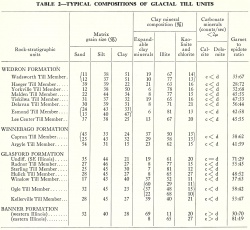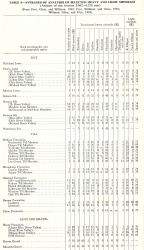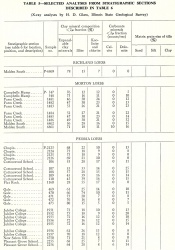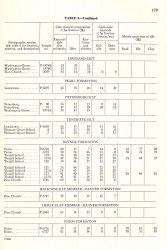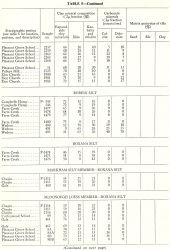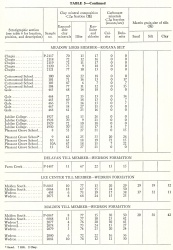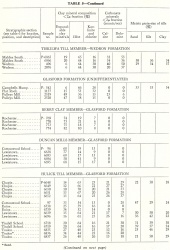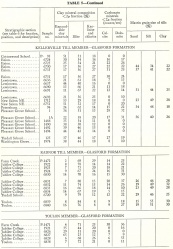Winnebago Formation
Lithostratigraphy: Winnebago Formation
Chronostratigraphy: Cenozoic Erathem >>Quaternary System >>Pleistocene Series
Primary source
Willman, H. B., and John C. Frye, 1970, Pleistocene Stratigraphy of Illinois: Illinois State Geological Survey Bulletin 94, 204 p.
---
Berg, R.C., J. P. Kempton, L. R. Follmer, D. P. McKenna, 1985, Illinoian and Wisconsinan stratigraphy and environments in northern Illinois: the Altonian revised: Illinois State Geological Survey Guidebook 19, 177 pp.
Berg R. C., E. D. McKay III, R. J. Goble, and H. Wang, 2013, Age of the Winnebago Formation of north-central Illinois as determined by optically stimulated luminescence dating: Illinois State Geological Survey Circular 580, 15 p.
Curry, B. B., 1989, Absence of Altonian glaciation in Illinois: Quaternary Research 31, p. 1–13.
Hansel, A. K., E. D. McKay III, 2010, Quaternary period, in Kolata, D. R., and C. K. Nimz, (Eds.), Geology of Illinois. Illinois State Geological Survey, Champaign, IL, pp. 216–247.
Contributing author(s)
H. B. Willman and John C. Frye, David A. Grimley
Name
Original description
The Winnebago Formation was informally named Winnebago drift (Frye and Willman, 1960) for Winnebago County, as a replacement for the term Farmdale drift (Shaffer, 1956). The term was formalized as a formation in 1969 (Frye et al.).
The unit is now considered to be late Illinois Episode (Berg et al., 1985; Curry; 1989; Hansel and McKay, 2010)
Derivation
Other names
History/background
Type section
Type location
The type locality was designated as the Rock Valley College Section and adjacent exposures and Northwest Tollway borings No. 2 and No. 5 (Kempton, 1963, p. 38). The type section is in the Rock Valley College Section, SW NW SW Sec. 10, T. 44 N., R. 2 E.
Type author(s)
Type status
Reference section
Reference location
Reference author(s)
Reference status
Stratigraphic relationships
The formation was originally defined to include those glacial deposits bounded by the Farmdale Soil at the top and the Sangamon Soil at the base. However, the Sangamon Geosol is now known to occur stratigraphically above the Winnebago Formation (but is largely eroded due to periglacial processes).
The Winnebago Formation was originally subdivided into three named members: the Capron Till Member at the top, the Plano Silt Member (note: this unit now abandoned; Curry, 1989) below the Capron, and the Argyle Till Member below. In the subsurface below the Argyle are silts, tills, and some outwash that have not been differentiated into members.
Extent and thickness
In the type section the Winnebago consists of 1.5 feet of Peoria Loess overlying 6 feet of leached till and 7 feet of calcareous, pink, sandy and cobbly till. The till is the Argyle Till Member of the Winnebago Formation. The Winnebago Formation probably is as much as 400 feet thick in the deeper bedrock valleys. This unit occurs in Boone and Winnebago Counties of north-central Illinois.
Lithology
The Winnebago Formation consists of tills, silts, peats, and outwash. The formation has been described in detail from deep core borings in Kane and McHenry Counties (Kempton, in Frye and Willman, 1965a), and its textural and mineral composition has been described (Frye et al., 1969).
Compositional data are given in tables 2, 4, and 5.
|
Core(s)
Photograph(s)
Contacts
Well log characteristics
Fossils
Age and correlation
The Winnebago Formation was originally interpreted to have been deposited within the Altonian Substage of the Wisconsinan Stage (Willman and Frye, 1970). However, it is now interpreted to have been deposited during later phases of the Illinois Episode (Berg et al., 1985; Curry, 1989; Hansel and McKay, 2010; Berg et al., 2013). The occurrence of the Sangamon Geosol developed into the Winnebago Formation is patchy because of periglacial erosion during the last glaciation. Deposition of the Winnebago Formation is largely related largely to glacial advances from the Lake Michigan Lobe and possibly the Green Bay Lobe (Berg et al., 2013).
Environments of deposition
Economic importance
Remarks
References
- Berg, R.C., J. P. Kempton, L. R. Follmer, D. P. McKenna, 1985, Illinoian and Wisconsinan stratigraphy and environments in northern Illinois: the Altonian revised: Illinois State Geological Survey, Guidebook 19, 177 p.
- Berg R. C., E. D. McKay III, R. J. Goble, and H. Wang, 2013, Age of the Winnebago Formation of north-central Illinois as determined by optically stimulated luminescence dating: Illinois State Geological Survey, Circular 580, 15 p.
- Curry, B. B., 1989, Absence of Altonian glaciation in Illinois: Quaternary Research 31, p. 1–13.
- Frye, J. C., H. D. Glass, J. P. Kempton, and H. B. Willman, 1969, Glacial Tills of Northwestern Illinois: Illinois State Geological Survey, Circular 437, 47 p.
- Frye, J. C., and H. B. Willman, 1960, Classification of the Wisconsinan Stage in the Lake Michigan Glacial Lobe: Illinois State Geological Survey, Circular 285, 16 p.
- Frye, J. C., and H. B. Willman, 1965a, [Illinois part of] Guidebook for field conference C—Upper Mississippi Valley (R. P. Goldthwait [organizer]; C. B. Schultz and H. T. U. Smith [eds.]): International Association of Quaternary Research 7th Congress, Nebraska Academy of Science, p. 81-110; Illinois State Geological Survey Reprint 1966-B (supplemental data, J. P. Kempton and H. D. Glass, p. C-S1-C-S11), 41 p.
- Hansel, A. K., E. D. McKay III, 2010, Quaternary period, in Kolata, D. R., and C. K. Nimz, (Eds.), Geology of Illinois. Illinois State Geological Survey, Champaign, IL, pp. 216–247.
- Kemption, J. P., 1963, Subsurface Stratigraphy of Pleistocene Deposits of Central-Northern Illinois: Illinois State Geological Survey, Circular 356, 43 p.
- Shaffer, P. R., 1956, Farmdale drift in northwestern Illinois: Illinois State Geological Survey, Report of Investigations 198, 25 p.
ISGS Codes
| Stratigraphic Code | Geo Unit Designation |
|---|---|
